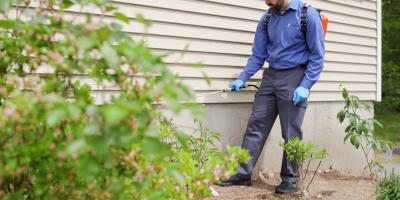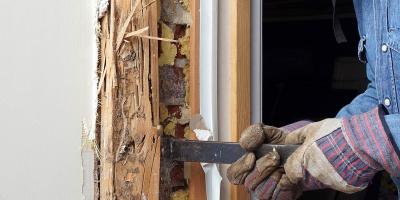The Stink Bugs Are Back… Or Did They Ever Leave?

Spoiler alert: They didn’t.
If you’re suddenly seeing stink bugs again now that the temperatures are starting to rise with the spring, you’re not alone. And, as it turns out, they’ve been there for months.
Stink bugs slot under the umbrella of “fall invaders,” which can be confusing when homeowners start seeing an influx of them come springtime. If they’re considered a fall pest, why are they popping up now?
Keep in mind -- stink bugs can and do make an appearance even during the winter months, on those rare warm, sunny days when homeowners might see them gathering around windows or along walls on the west and south facing sides of the residence.
So, when spring arrives it really shouldn’t come as a surprise that stink bugs start to emerge… or re-emerge, to be more accurate.
When it comes to understanding stink bug behavior, it helps to remember the adage, “What goes in must come out.” In other words, stink bugs, like other fall invaders, enter our homes during the fall to escape the onset of colder weather. Once the temperatures start to warm up, those same stink bugs are eager to find their way out, which is why you might see them… again.
Let’s review a quick 411 on fall invader pests to make more sense of stink bugs in the spring…
What is a Fall Invader Pest?
As the name suggests, fall invader pests are those that make their way into New England homes as soon as the days grow shorter and colder, and the nights darker and longer. They are looking for warm shelter to weather the winter.
While you might notice them during the fall as they seek entry into your home, you won’t see much of them in the winter. Fall invader pests are somewhat benign in that they won’t eat or reproduce throughout the winter months, which means they won’t venture into the open in search of food or mates, unlike many other pests. Generally speaking, stink bugs will stay cozy in attics and wall voids throughout the winter months, and that’s why homeowners suddenly start seeing them again in the spring.
Stink bugs are not the solo offenders in the fall invader category of pests; they’re in quite common company with lady beetles, western conifer seed beetles, cluster flies, and boxelder bugs.
None of these pests are known to cause direct harm inside a home; they are considered nuisance pests -- you don’t want them inside, but you’re not going to suffer any real damages because of their presence. However, if large volumes of deceased pests accumulate in hard to access spaces, the carcasses can attract secondary pest invaders seeking a meal such as mice and certain beetle species.
That said, it’s important to note that fall invader species, like stink bugs, can wreak absolute havoc on crops, trees, and other native species during the warm months once they leave their overwintering structures.
When it comes to stink bugs, specifically, these pests are merely smelly nuisances and pose no threat to the invaded structure or the people within it. However, stink bugs can be a real menace to other species once they emerge from their overwintering phase and shelter.
Fortunately, the University of New Hampshire (UNH) is closely monitoring the presence of stink bugs throughout the state, specifically to track any agricultural damage. So far, it looks like crop damage due to stink bugs has been isolated to some Connecticut orchards in 2014. However, stink bugs are considered a serious agricultural pest in other states, which is why UNH continues to monitor their presence.
Send Stink Bugs Packing
Harmless or not, most homeowners want to get rid of stink bugs -- not to mention other fall invader pests -- come springtime.
Fortunately, the top exclusion tip couldn’t be simpler. Just open your windows during warmer days when you’ve noticed their activity ramp up in your home. If that strategy somehow fails or isn’t fast enough, reach for the vacuum cleaner and suck up the offending stink bugs -- dead or alive.
Pro-tip: Toss the vacuum cleaner bag to prevent the stink bug smell from spreading throughout your space.
Better Yet: Block their Entry in the First Place
Like so many pests, when it comes to stink bugs and other fall invaders, prevention is really the name of the game.
In fact, the only way to control stink bugs is to keep them from showing up in your space in the first place. Bear in mind that fall invader pests, like stink bugs, tend to return to their favorite spots.
Translation: If you saw stink bugs in your home this year, their offspring will likely be back next year. Think of it as having a beloved vacation home handed down from one generation to another. Best to cancel future reservations sooner than later…
Introducing Our Fall Invader Program: Founded on Prevention
Scheduling an inspection for JP Pest’s Fall Invader Program is a smart strategy for proactive pest control in your home. Note that it is essential for these fall invader inspections and services should be scheduled as soon as possible, ideally in the springtime, to secure a spot on the service schedule. This is because there is a very small window of time that this service can be done effectively, so space is limited.
Typically, we reach our maximum capacity of customers far ahead of the fall season, which is why we encourage anyone who has noticed stink bugs or other fall invader activity to get on our calendar sooner than later.
Whether your seasonal invaders are stinky or spotted we can help keep them out next year. Contact us today to get a free quote.



